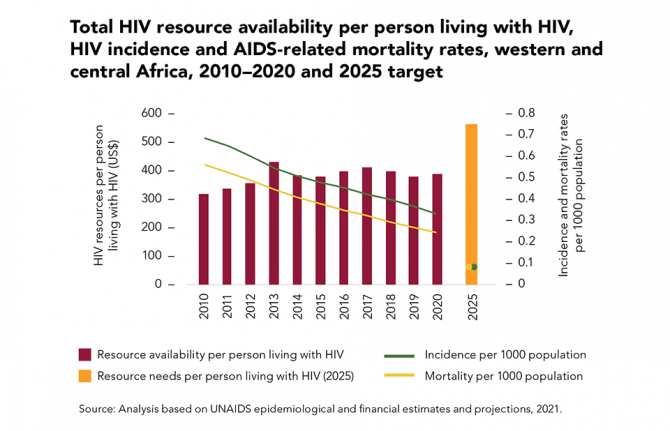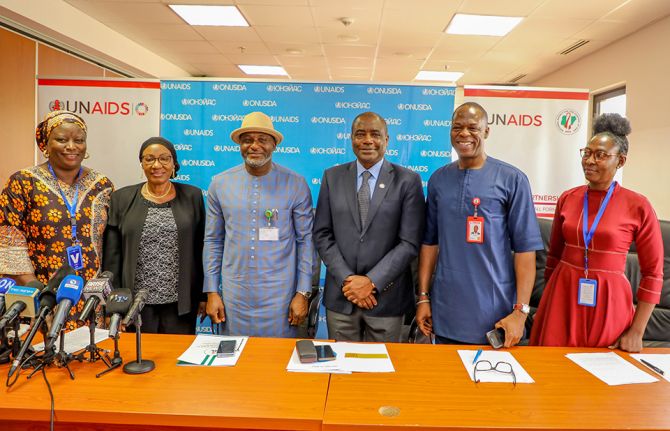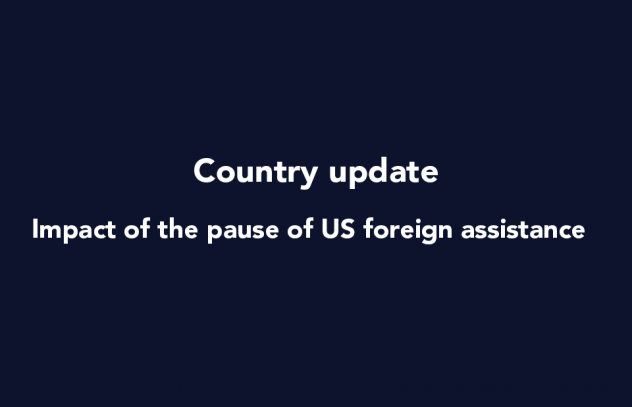

Update
Financial shortfalls hold back the HIV response in western and central Africa
25 October 2021
25 October 2021 25 October 2021Underinvestment in the HIV responses of low- and middle-income countries was a major reason why the global targets for 2020 were missed. Financial resource availability during the past five years was consistently below the resources needed, and in 2020 it was 29% less than the US$ 26 billion target for that year (in constant 2016 US dollars).
In western and central Africa, large resource shortfalls and continued reliance on out-of-pocket expenditures (such as user fees for health services) are associated with more modest declines in the incidence of HIV infection and the rate of AIDS-related mortality compared to eastern and southern Africa, where a combination of domestic and international investments has fuelled the rapid expansion of HIV prevention, testing and treatment in areas with a high burden of HIV, resulting in strong and steady reductions in the rate of HIV infections and AIDS-related mortality.



